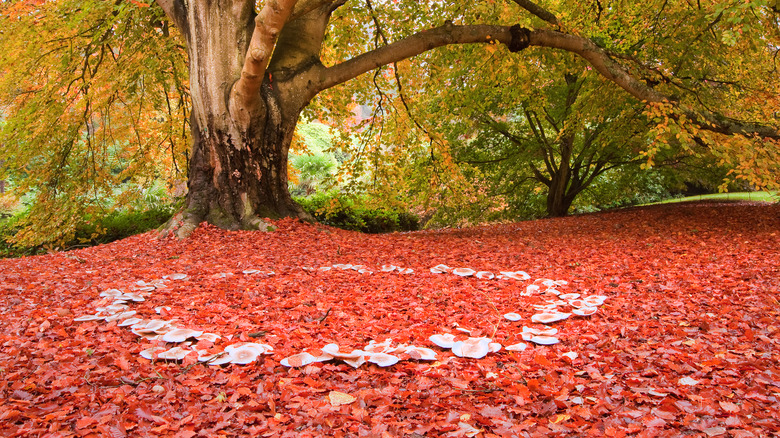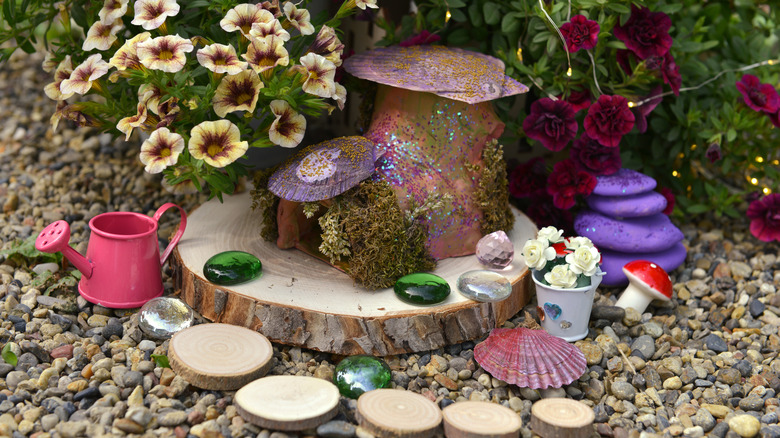TikTok's Obsession With Fae Traps Has Gardeners On The Lookout, Here's Why
TikTok and other social media outlets are abuzz with talk of fae traps, with online users tagging their videos with "#faetrap" and posting numerous examples of these whimsical and mysterious spots. But what is a fae trap? Fae is the plural terminology used to describe the domain of fairies, usually present in European mythology as magical trickster figures intent on luring unsuspecting mortals into their traps. These traps, often stumbled upon by humans in the natural environment, have an air of beauty and mystery about them. They are usually marked off by definition from the surrounding landscape, i.e., a circle of stones or mushrooms or a sudden break in the trees. To stumble into them can allegedly mean abduction, death, or other consequences for falling into the fae world.
This obsession with fae traps and fairy rings has influenced garden design trends, with a budding desire to add a little magic and mystery to everyday backyards and gardens. Whether you are looking to attract fae to your garden through plantings and accessories or looking to create small, beautiful, and mysterious scenes that may or may not entrap mortals in the fae world, there are some great things to keep in mind in bringing this cool element into your own garden.
What makes a fae trap?
Fae traps are usually located in nature, where they can be found in any spot that appears both mysterious and beautiful, usually defined by a specific demarcation like a ring of grass, flowers, tree branches, or mushrooms. Fae traps can also feel like doorways to another world — like a sudden part in the bushes that leads to the sea or a stairway in the middle of nowhere. A circular or linear formation of mushroom growth, which often occurs in the natural world due to fungi root systems, is often called a "fairy ring" or "fairy path."
One of the hallmarks of a fae trap is its incongruence — a sense of intentional order amidst the chaos of the natural world. A carefully laid circle of stones or plant growth or a passageway with a beautiful vista beyond. They instill a sense of purposeful construction that can only be meant to trick, ensnare, or serve as a gateway to another world. They also can reflect the incongruity of manmade objects in the natural world that shouldn't be there, like fire hydrants in the woods or a child's doll left in a field.
How to make a fae trap in your garden
The key to creating whimsical fae traps in your yard or garden is building small tableaus that hint at fairy magic. Often, these can be created with natural elements like a circle of large stones or a decorated tree stump. Creating a fae trap tableau in your garden is also about framing. Fae traps usually have some sort of definition, be they natural elements or man-made ones. Consider using mirrors and old door or window frames to frame scenes and portions of the garden. If you are designing a garden, try adding a circular moon gate in lieu of an ordinary gate, which helps attractively frame whatever lies beyond.
Make sure to add interesting little fairy-like tableaus in unexpected spaces to be discovered and enjoyed, like under a tree or a corner of the yard. For a magical fairy garden, try planting the fae's favorite flowers, according to legend, like bluebells, daisies, and foxglove. Or create a miniature fairy garden in a flower bed or large planter that will attract the magical fae (or at least give the impression they secretly inhabit your garden).

